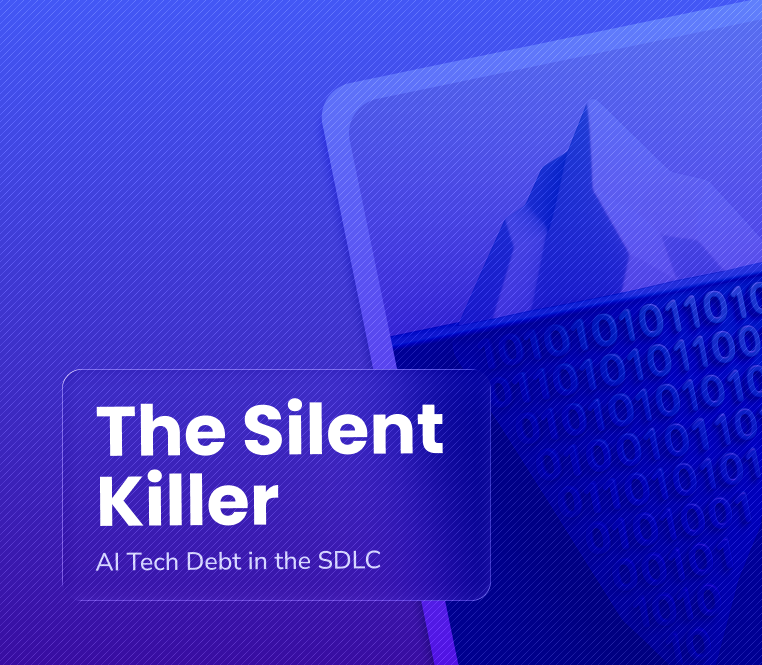Let me very gracefully put you in a situation.
You notice a leaking ceiling in your house.
You grab a bucket, mop the floor, and think the problem is solved.
However, the next day, you notice that the leak has returned.
The bucket fixed the symptom - water dripping - but not the systemic cause: a broken pipeline hidden behind walls.
And this is not just about buckets, water, and the ceiling!
Many engineering teams operate in such a way.
A failed deployment? Add a hotfix.
A buggy release? Patch it overnight.
Each fix feels like progress, but the Change Failure Rate (CFR) keeps climbing.
Why?
Because the real problem isn’t about code, it is about systems - how teams work, how tools connect, and how culture rewards speed over safety, and most importantly, how AI is quietly reshaping SDLC.
Thus, in this post, we’ll go beyond the quick fixes and discuss 8 systemic reasons your CFR might be rising, or rather to say, the real plumbing work you would need to fix the leak!
8 Root Causes Behind Rising Change Failures (Excuse Code for a Time Being)

1) Velocity Metrics > Reliability Metrics
Symptom: Teams deploy frequently, but production failures and hotfixes are increasing.
Systemic Cause:
Modern teams obsess over speed - deploy frequency, story points, lead time. Dashboards shine, but unstable changes often hide beneath the numbers. And reliability metrics like CFR, MTTR, and MTBF rarely get equal weight.
Trade-off Blindness:
High velocity without systemic safeguards is the perfect recipe for latent instability. Techniques like progressive rollouts, canary deployments, feature flags, automated regression, and chaos testing are the real guardrails.
2) AI-Accelerated Code, Human-Slowed Reviews
Symptom: AI-generated code passes automated checks but causes bugs and regressions in production.
Systemic Cause:
Modern teams increasingly rely on AI copilots, code generators to accelerate development. Though these tools infuse increased throughput, they also introduce new classes of errors that traditional review and testing practices aren’t built to catch.
Key engineering points:
- Code hallucinations: AI may suggest APIs or libraries that don’t exist or aren’t compatible with your stack.
- Security and compliance gaps: Due to limited context, AI might generate code that violates regulatory requirements or security best practices.
- Integration blind spots: Generated snippets often ignore dependencies, version constraints, or side effects in distributed systems.
Solution: Boost AI code adoption but with deep insights (AI Tech Debt is real!)
AI-assisted coding speeds development but can introduce hidden risks and AI-driven technical debt. Without visibility into key patterns around AI usage, teams accumulate fragile or inconsistent code practices that slowly increase CFR.
3. Overconfidence in Automation
Symptom: “The pipeline was green, so it must be safe”, right before production failures happen (on Friday evening).
Systemic Cause:
Overconfidence in automation isn’t just technical; it’s psychological and cultural. Even the most sophisticated CI/CD or AI-assisted workflows can create false trust.
Psychological factors embedded in engineering practices:
- Automation Bias: Engineers carry a false belief that automated tests and pipelines are flawless.
- Confirmation Bias: Instead of challenging the results, teams celebrate green builds or passing AI-generated code.
- Diffusion of Responsibility: With automation doing much of the work, humans feel less accountable.
4. Hidden AI & Systemic Dependencies
Symptom: Small changes in code or models trigger unexpected failures across multiple systems.
Systemic Cause:
Systems include AI/ML models, feature flags, asynchronous data pipelines, and multi-cloud infrastructure. Dependencies are non-obvious, temporal, and probabilistic. And thus, it makes failure propagation hard to predict.
Scenario:
- A small change in an AI model’s preprocessing pipeline passes tests.
- Downstream services like apps and notifications fail intermittently.
- Hidden data and model dependencies make the issue hard to trace.
- CFR rises as teams scramble across layers.
Mindset shift as a solution:
Green build ≠ safe system.
Even if tests pass, hidden AI and pipeline dependencies can fail silently.
Thus,
- Treat models, pipelines, and services as one system.
- Monitor end-to-end, run simulations, and rollout progressively.
- Track CFR to catch issues early and reduce tech debt.
5. Observability Debt
Symptom: Teams are flooded with alerts, thus critical incidents are delayed or overlooked.
Systemic Cause:
Modern systems generate massive telemetry. Trying to monitor everything creates alert noise. Important signals get buried, and teams experience alert fatigue.
Cultural Factors:
- Incident response is reactive; root causes aren’t prioritized.
- Success is measured by uptime, not by reducing silent failures.
- The team assumes others will catch cross-system issues. Lacks ownership.
Solution (Less is More: Choose Tools Wisely):
Too many dashboards? Too many alerts? That’s like listening to 100 radios at once; you hear nothing important.
- Choose a high-value tool that provides end-to-end visibility.
- Focus on alerts and metrics that reveal actionable insights.
- Correlate data to detect root causes and hidden failures quickly.
- Use tools equipped with AI context, so they can suggest actionable steps, not just report what’s happening.
Outcome:
Teams spend less time chasing noise, detect critical failures early, and maintain reliability in complex systems.
6. Ineffective PR Practices
Symptom: Code merges fast, but production bugs and rework keep rising.
Systemic Cause:
Poor PR practices - like unclear commit messages, ignoring merge conflicts, and large pull requests that cause review fatigue - allow issues to slip into production.
Top PR Hygiene Practices:
- Keep PRs Small (200-400 LoC), use clear descriptions, and include tests
- Use AI suggestions as helpers, not replacements
- Monitor defect escape rate, rework, and review coverage
- Encourage constructive feedback
7. Lack of AI-Aware SDLC
Symptom: Teams ship features at AI speed, but SDLC processes can’t keep up, resulting in hidden defects.
Systemic Cause:
AI-driven speed is now the norm. But legacy SDLC processes, built for manual coding, don’t align. The gap creates risks like poor planning, misaligned reviews, weak feedback loops, and leadership blind spots.
Create AI-Aware SDLC:
- Plan by human effort, not AI output: Align story points and capacity to real decision-making.
- Review for intent and impact: Evaluate AI-generated code on logic, integration, and system-level effects.
- Make AI visible to leadership: Track usage, edits, defects, and velocity for informed decisions.
You should also read this: The AI-Powered SDLC: A Leader's Playbook
8. Passive Human Reviewers
Symptom: AI takes engineering by storm, and every output by AI looks so real that AI adoption effortlessly discards the importance of humans. Humans only get involved when things turn very messy.
Systemic Cause:
Teams rely heavily on AI for coding, reviewing, testing, and deployment decisions. However, automated outputs and code review regularly miss context, business rules, or system-wide implications.
Solution (Active Human Reviewers = Human-in-the-Loop Culture + Context-Aware AI Code Review Tool):
- AI flags risks, humans decide (Shared responsibility)
- Focus on high-impact issues (Targeted intervention)
- Validate context and business logic (Context check)
- Provide iterative feedback to AI (Continuous refinement)
- Balance speed with safety (Safe velocity)
Conclusion: Framework to Reduce Change Failure Rate Beyond the Code
Treat CFR not as a metric, but as an ecosystem outcome. To fix it, you need a framework that balances speed, safety, and learning across the SDLC.
Detect → Diagnose → Decide → Deliver
- Detect: Use metrics (CFR, MTTR, Defect Density) to catch weak signals early.
- Diagnose: Go beyond symptoms, trace root causes across trade-offs, culture, and tooling.
- Decide: Balance human judgment with AI insights to select the safest, fastest path forward.
- Deliver: Release with confidence, progressive rollouts, tested changes, and governed AI adoption.













